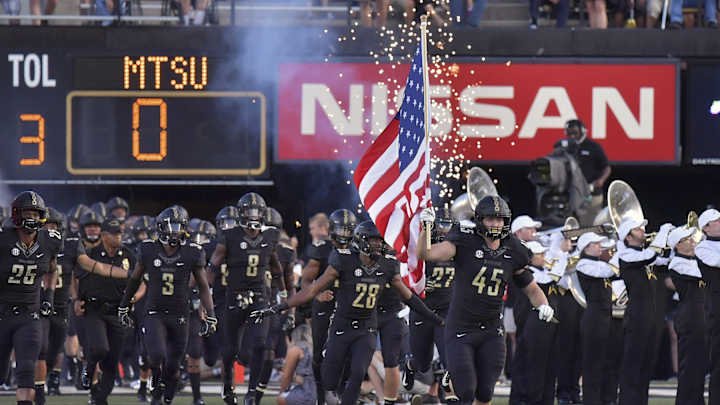A Different Look Into Talent Gap In The SEC

Just how significant is the talent gap between the Vanderbilt Commodores football team than the rest of the Southeastern Conference?
According to a recent metric put together by Sports Illustrated's Michigan site, Wolverine Digest, it's not so vast.
In the article written by Steve Deace, rather than using production-based metrics or only counting returning starters on a given roster, this is a more analytics-based method.
Here's the author's explanation of his calculations in his own words.
HOW IT WORKS
"To help answer this question and provide a more profitable metric, back in 2017, I decided to create what I call the Total Team Talent Ratings," wrote Deace. "These compare the roster potential of power five programs (and Notre Dame) with each other since that's each program's primary competition."
The following criteria calculate these:
-- Using the 247 Sports Composite recruiting rankings of the three primary services (247, Rivals, and ESPN), we give each player on the roster a point total based on the star they were assessed as a recruit. So 5 points for a 5-star, 4 points for a 4-star, etc.
-- We only evaluate the last four recruiting classes, so for this year, that's 2017-20. That's because fifth-year seniors at the power five conference level are just not as impactful or plentiful as they used to be. But if fifth-year senior figures prominently on the depth chart, they are still accounted for.
-- These are continually being updated all offseason to account for the latest roster news, and this update is with news through May 8.
-- To account for teams that are considered "developmental" programs, thus they don't recruit a lot of 4-and-5-star prospects, as their players overachieve their incoming star rating they are given additional points. For example, Minnesota's Tanner Morgan was just the No. 1185th-rated prospect coming out of high school, but he clearly played above that last season. Therefore, he's now considered a 4-star in this metric. Players who underachieve their star ratings are not lowered points, though, because the point of this exercise is to measure potential. And there could be mitigating circumstances beyond an overrated evaluation that has held a player back, like injuries.
-- Finally, there are many players in the transfer portal awaiting word on a waiver to play next season. Therefore, several teams could be in line for a boost in these ratings between now and September.
What did Deace and Wolverines Digest find in their metrics for the SEC?
SEC-1. Georgia (356) 2. Alabama (333) 3. Auburn (299) 4. Florida (295) 5. Tennessee (292) 6. tie, South Carolina, Texas A&M (288) 8. LSU (287) 9. Mississippi State (282) 10. Kentucky (278) 11. Missouri (269) 12. Mississippi (259) 13. Arkansas (254) 14. Vanderbilt (246)
WHAT IT MEANS TO US
Based on simple math, the Commodores aren't that far below most of the conference. However, more realistically than only using simple math to subtract Vanderbilt's number form Georgia's and leaping to think the gap isn't that great mathematically when you consider the number of stars needed to catch the Bulldogs it's considerable.
However, when you look at No.10 Kentucky with 278 points, the gap could be as little as Vanderbilt gaining eight four stars in a single recruiting class.
The Commodores have proven to be able to contend with several of the middle of the pack programs in the conference in recent seasons. They could again reach that plateau should head coach Derek Mason, and his staff finds the formula to add a few more impact players.
It's not necessarily the most scientific method, and it's certainly not a predictor of performance on the field, but it is an interesting new idea to consider.
Follow Greg on Twitter @GregAriasSports and @SIVanderbilt or Facebook at Vanderbilt Commodores-Maven.

A 29 year veteran of radio in the Middle Tennessee area and 16 years in digital and internet media having covered the Tennessee Titans for Scout Media and TitanInsider.com before joining the Sports Illustrated family of networks.